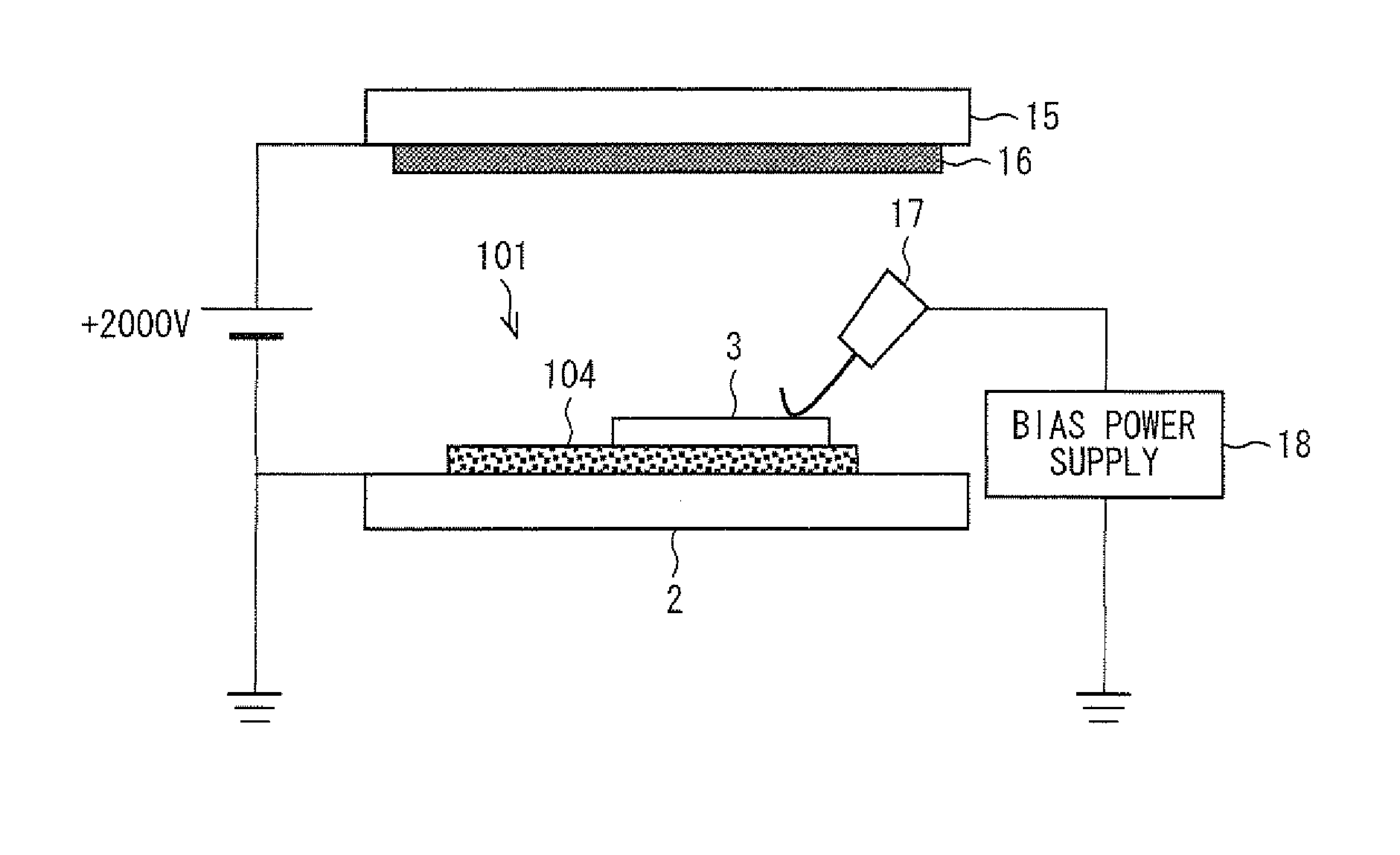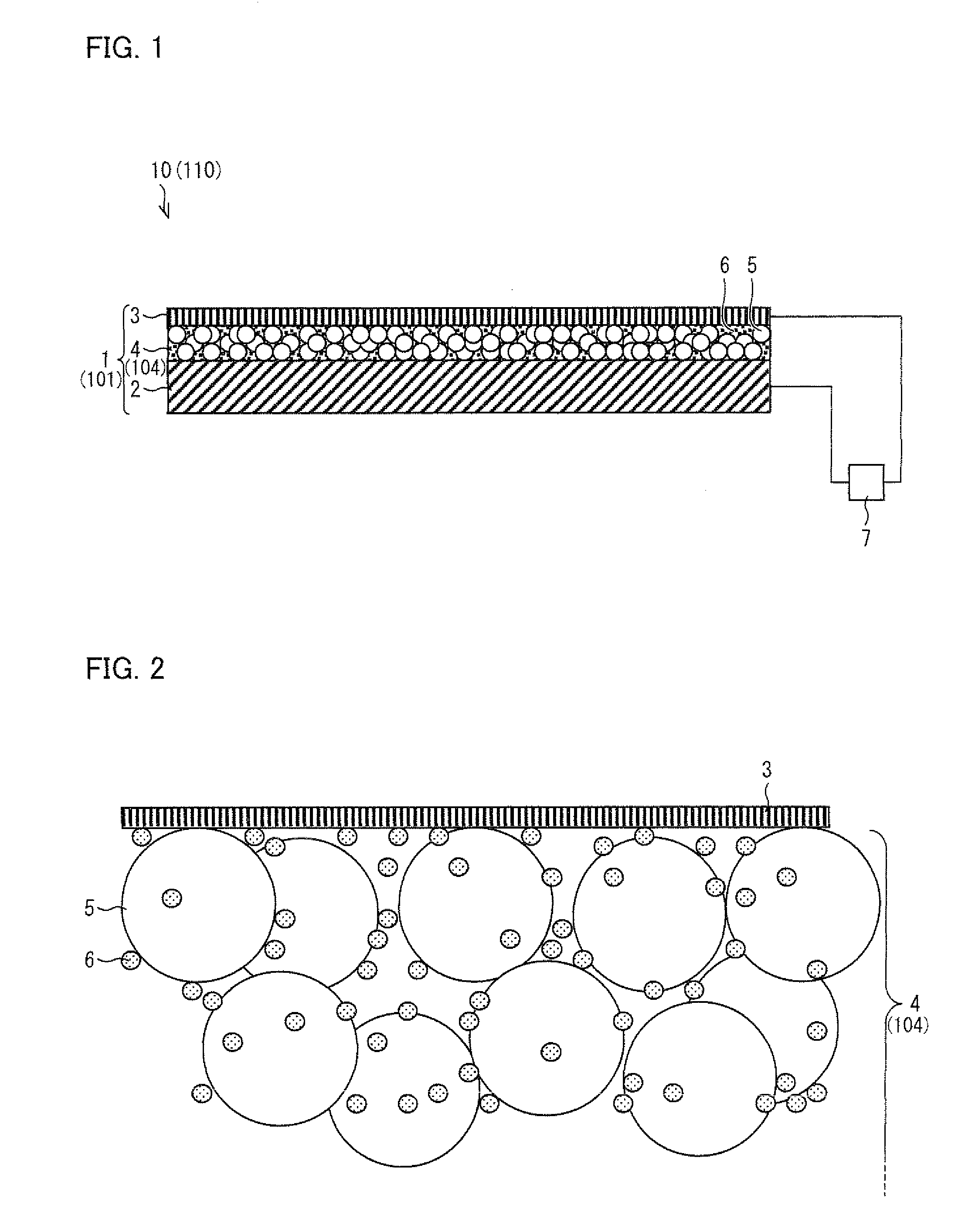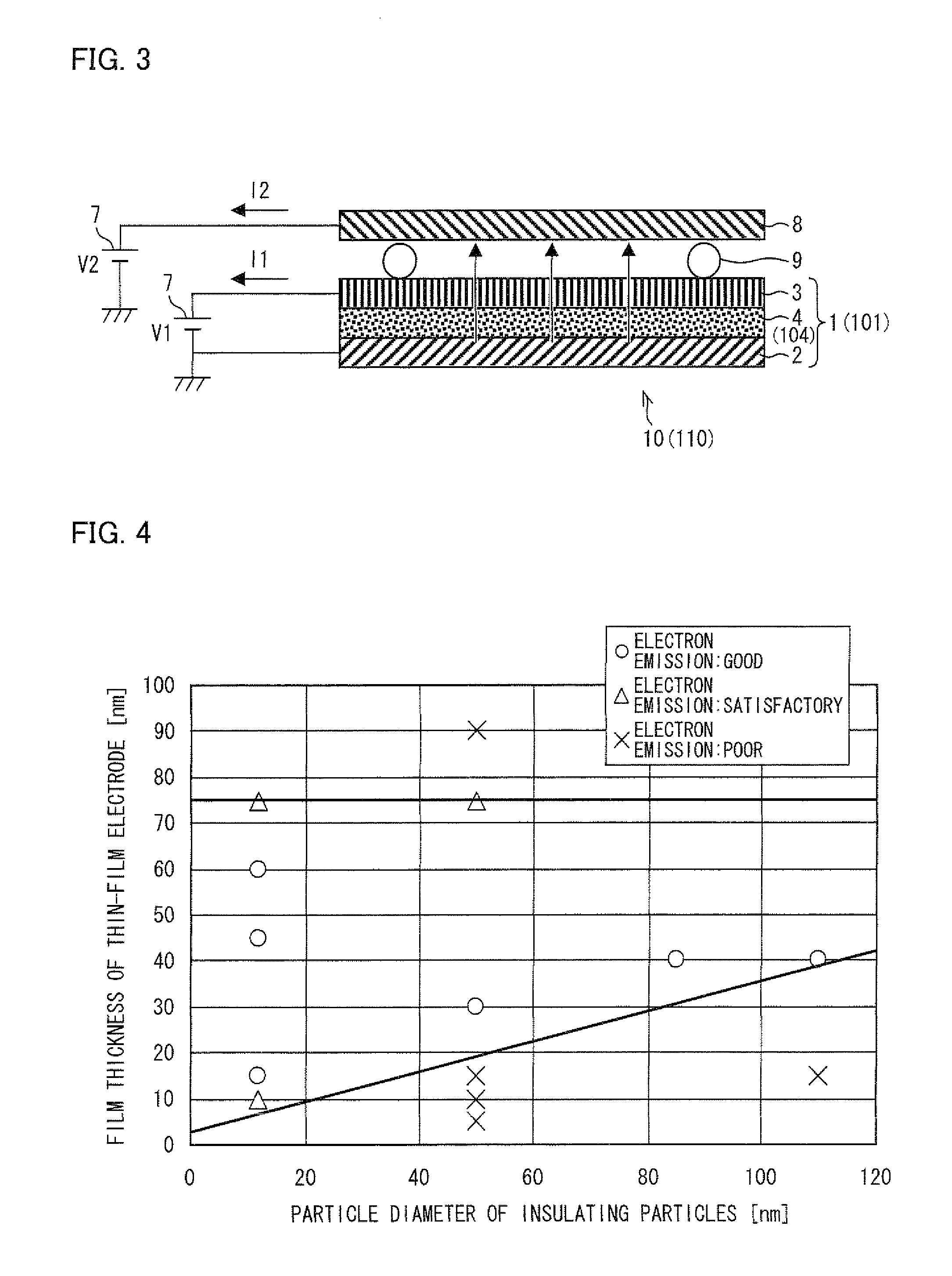Electron emitting element, electron emitting device, light emitting device, image display device, cooling device, and charging device
a technology of electron emitting device and electron emitting element, which is applied in the direction of luminescnet screen, discharge tube, instrument, etc., can solve the problems of ozone damage to human bodies, oxidizing various substances, and breaking down of elements, so as to achieve the effect of reducing the amount of ballistic electrons that transmit the thin-film electrod
- Summary
- Abstract
- Description
- Claims
- Application Information
AI Technical Summary
Benefits of technology
Problems solved by technology
Method used
Image
Examples
embodiment 1
[0047]FIG. 1 illustrates a configuration of an electron emitting device of Embodiment 1 including an electron emitting element according to the present invention. As illustrated in FIG. 1, an electron emitting element 1 of the present embodiment includes an electrode substrate 2 serving as a lower electrode, a thin-film electrode 3 serving as an upper electrode, and an electron acceleration layer 4 sandwiched between the electrode substrate 2 and the thin-film electrode 3. Further, the electrode substrate 2 and the thin-film electrode 3 are connected to a power supply 7, so that a voltage can be applied between the electrode substrate 2 and the thin-film electrode 3 which are provided so as to face each other. The electron emitting element 1 applies a voltage between the electrode substrate 2 and the thin-film electrode 3 so that current flows between the electrode substrate 2 and the thin-film electrode 3, that is, in the electron acceleration layer 4. A part of electrons in the cu...
example of embodiment 1
[0069]The present example explains an experiment in which current measurement was carried out by use of electron emitting elements according to Embodiment 1. Note that this experiment is merely an example of the present embodiment and by no means limits the present invention.
[0070]First, electron emitting elements of Examples (Ex.) 1 to 9 and electron emitting elements of Comparative Examples (C. Ex.) 1 to 5 were prepared. The electron emitting elements of Examples 1 to 9 and Comparative Examples 1 to 5 were prepared to have the insulating particles 5 (silica particle diameter) and the thickness of the thin-film electrode 3 (surface electrode film thickness) as shown in Table 1 below. The following description deals with a method for preparing the electron emitting elements of Examples 1 to 9 and Comparative Examples 1 to 5.
[0071]The electron emitting element of Example 1 was prepared as follows. First, 3 mL of hexane solvent was supplied into a 10 mL reagent bottle, and then 0.5 g ...
embodiment 2
[0084]FIG. 1 illustrates a configuration of an electron emitting device of Embodiment 2, which includes the electron emitting element according to the present invention. As illustrated in FIG. 1, an electron emitting element 101 of the present embodiment includes an electrode substrate 2 serving as a lower electrode, a thin-film electrode 3 serving as an upper electrode, and an electron acceleration layer 104 sandwiched between the electrode substrate 2 and the thin-film electrode 3. Further, the electrode substrate 2 and the thin-film electrode 3 are connected to a power supply 7 so that a voltage can be applied between the electrode substrate 2 and the thin-film electrode 3 which are provided so as to face each other. The electron emitting element 101 and the power supply 7 constitute an electron emitting device 110.
[0085]Note that members that have identical functions to those of members described in Embodiment 1 are given the same reference signs, and the explanations thereof ar...
PUM
 Login to View More
Login to View More Abstract
Description
Claims
Application Information
 Login to View More
Login to View More - R&D
- Intellectual Property
- Life Sciences
- Materials
- Tech Scout
- Unparalleled Data Quality
- Higher Quality Content
- 60% Fewer Hallucinations
Browse by: Latest US Patents, China's latest patents, Technical Efficacy Thesaurus, Application Domain, Technology Topic, Popular Technical Reports.
© 2025 PatSnap. All rights reserved.Legal|Privacy policy|Modern Slavery Act Transparency Statement|Sitemap|About US| Contact US: help@patsnap.com



